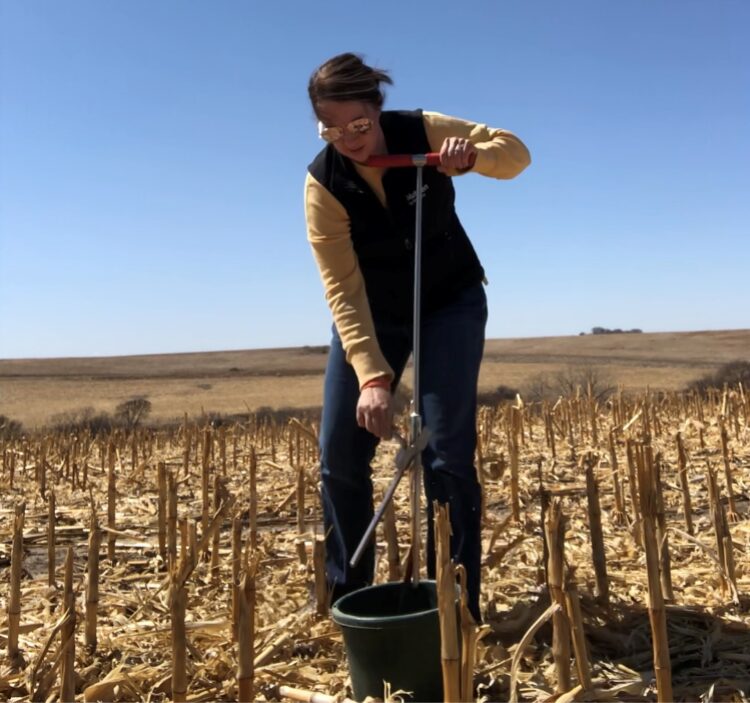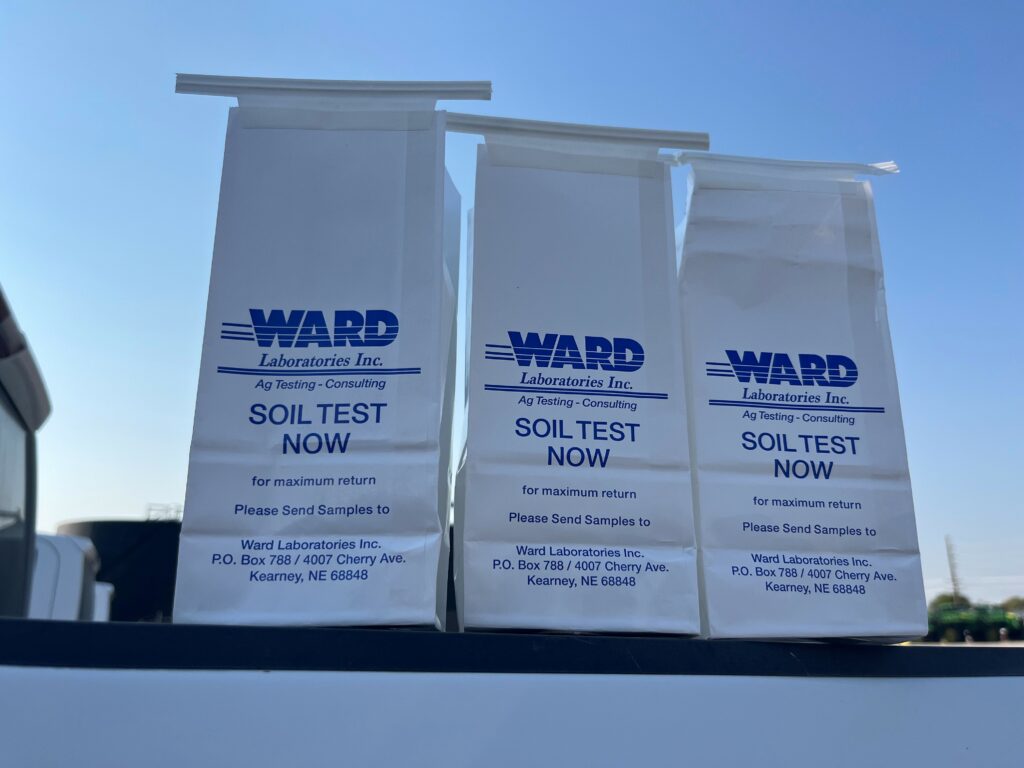By: Molly Aden
Prepping for the next growing season has begun! My husband, Jared, and I farm and ranch outside Farnam, Nebraska. One of my jobs on our farm is creating a fertility plan for our crop acres. I enjoy learning something new every year about each field by reviewing our soil samples and yield maps after harvest. I pull soil samples from each of our fields and send them into the lab to be tested for levels of nitrogen, phosphorus, potassium, sulfur, magnesium, calcium, sodium, copper, iron, manganese, zinc and boron. Why so many nutrients? For the past few years, I have focused on balancing our soil fertility, fertilizer efficiency and availability.

What does it mean to balance soil fertility?
When one nutrient is out of balance (too much or too little), it can impact the availability of other nutrients. These ratios can affect plant stress tolerance, uptake of other nutrients, soil structure and more.
For example, Our farm primarily consists of tighter clay soils that test high annually in potassium. In the past, we did not apply any potassium fertilizer. But looking deeper into the soil tests, we see that our fields also tend to test higher in calcium and magnesium, and we find our soil to be potassium-limiting. We feed our corn throughout the growing season by split-applying plant-available potassium in small doses throughout the growing season. We believe this helps our corn handle drought stress, which is common in our area!

Planning a Corn Fertility Program
With challenging grain prices, it is crucial to maximize yields while optimizing the return on fertility investment. Our plan focuses on fertilizer placement, nutrient availability, and timing to increase fertilizer efficiency.
The three macronutrients a corn crop needs are nitrogen, phosphorus, and potassium. But I’ll add sulfur in there, too, because Jared and I have scouted plenty of fields that show sulfur deficiency, and we can’t let that happen in our fields! We will consider our corn nutrient uptake at each growth stage, yield goal and application type when planning. Our farm split applies these macronutrients as much as possible to improve efficiency. Split application for us is the first shot of liquid fertilizer before planting through our strip-till, which is knifed into the ground. Fertilizers will be applied to the field with our pre-emerge and post-emerge herbicides. Lastly, we inject liquid fertilizer through our pivots later in the season.
In addition to applying N, P, K, and S, I have taken a closer look at each field’s manganese, copper, boron and zinc based on our soil tests. These micronutrients are applied in small amounts to the field but at the optimum timing of the corn’s growth stage so they can positively impact yield on our farm.
I encourage you to dig deeper into your corn fertility program this year! Look for ways to improve soil nutrient balance and efficiency through banding fertilizer right next to the row, splitting the applications, considering the nutrient form that the plant can uptake or maybe even taking your soil sample test to the next level and looking at your soil microbial health!



